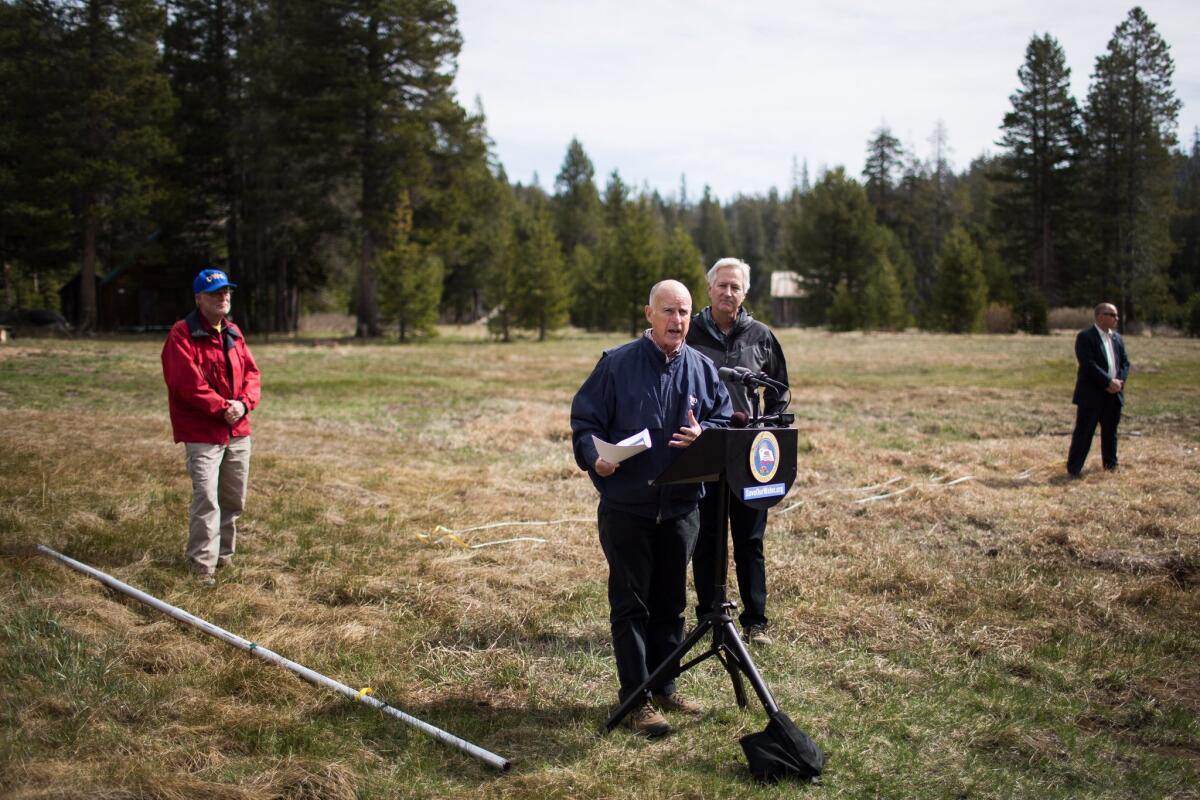Editorial: California’s mandatory water cutbacks are a good move

Residents of large urban areas have weathered California’s current drought, well into its fourth year, without making many substantial changes. Los Angeles was shielded from the full impact by water stored in reservoirs. Many Sacramento residents still have no water meters.
It’s different now, and good for Gov. Jerry Brown for saying so — and for doing something about it. The governor used Wednesday’s survey of the shockingly paltry Sierra snowpack to underscore the urgent need for water conservation and to impose the first-ever statewide mandatory water cutbacks.
His executive order calling for actions to reduce water consumption 25% follows a rather low-key action last month by the State Water Resources Control Board to restrict lawn watering, home carwashing and other less-necessary uses of California’s increasingly scarce commodity. And it precedes an expected announcement, later this month, by the Metropolitan Water District of Southern California that it will ration water among its member agencies, including Los Angeles. Consumer price hikes are likely to follow.
The water delivered by aqueduct to cities is generally referred to as “drinking water,” a euphemism that invokes images of health and virtue and obscures the fact that about half of urban water, in Los Angeles and elsewhere, is used to water lawns. What flows from the tap is at least as much garden and parking strip irrigation water — or flushing water or showering water — as it is actual drinking water. That leaves plenty of room for conservation measures with relatively small changes in lifestyle that don’t leave urban populations parched.
Los Angeles has grown by about 1 million people since 1970 but today uses about the same amount of water as it did then. Savings were accomplished by a variety of conservation efforts, the greatest of which was simply changing the code requirements for plumbing. Toilets, once the city’s biggest guzzlers, became the vanguard of conservation.
There remains a virtual river of water that could be captured by making smarter use of the water we have. Brown announced a rebate program to encourage consumers to replace water-hogging washing machines and other appliances, and that will help.
As the state deals with the drought, there will no doubt be pressure to continue the great water-delivery construction projects of the type that made California grow in the last century. In the short term, though — and perhaps in the long term as well — the most effective projects may come in the form of software to better manage home water use, landscape design to better capture rainwater, and a greater respect for the value of the state’s most precious resource.
Follow the Opinion section on Twitter @latimesopinion and Facebook
More to Read
Start your day right
Sign up for Essential California for news, features and recommendations from the L.A. Times and beyond in your inbox six days a week.
You may occasionally receive promotional content from the Los Angeles Times.






